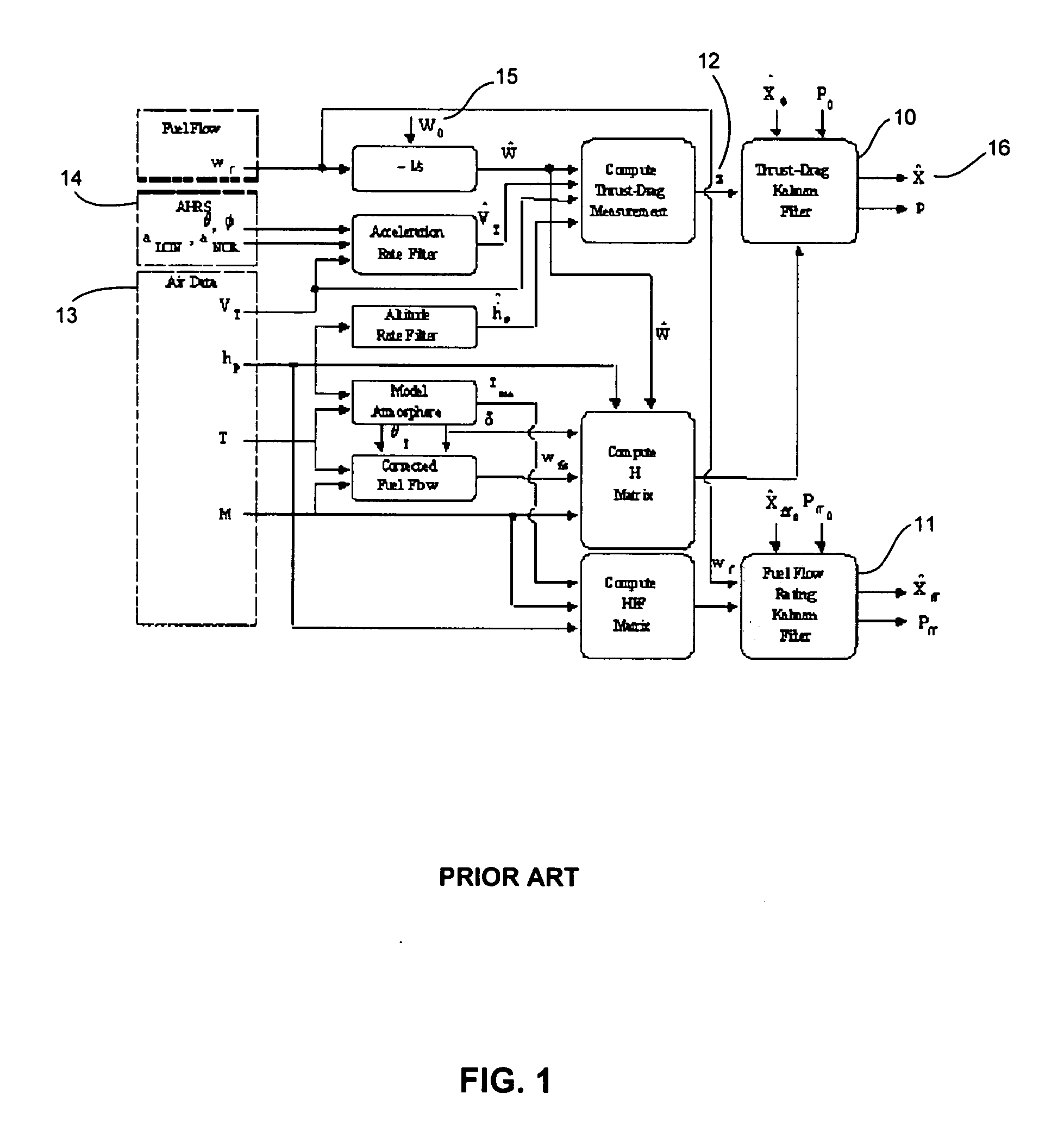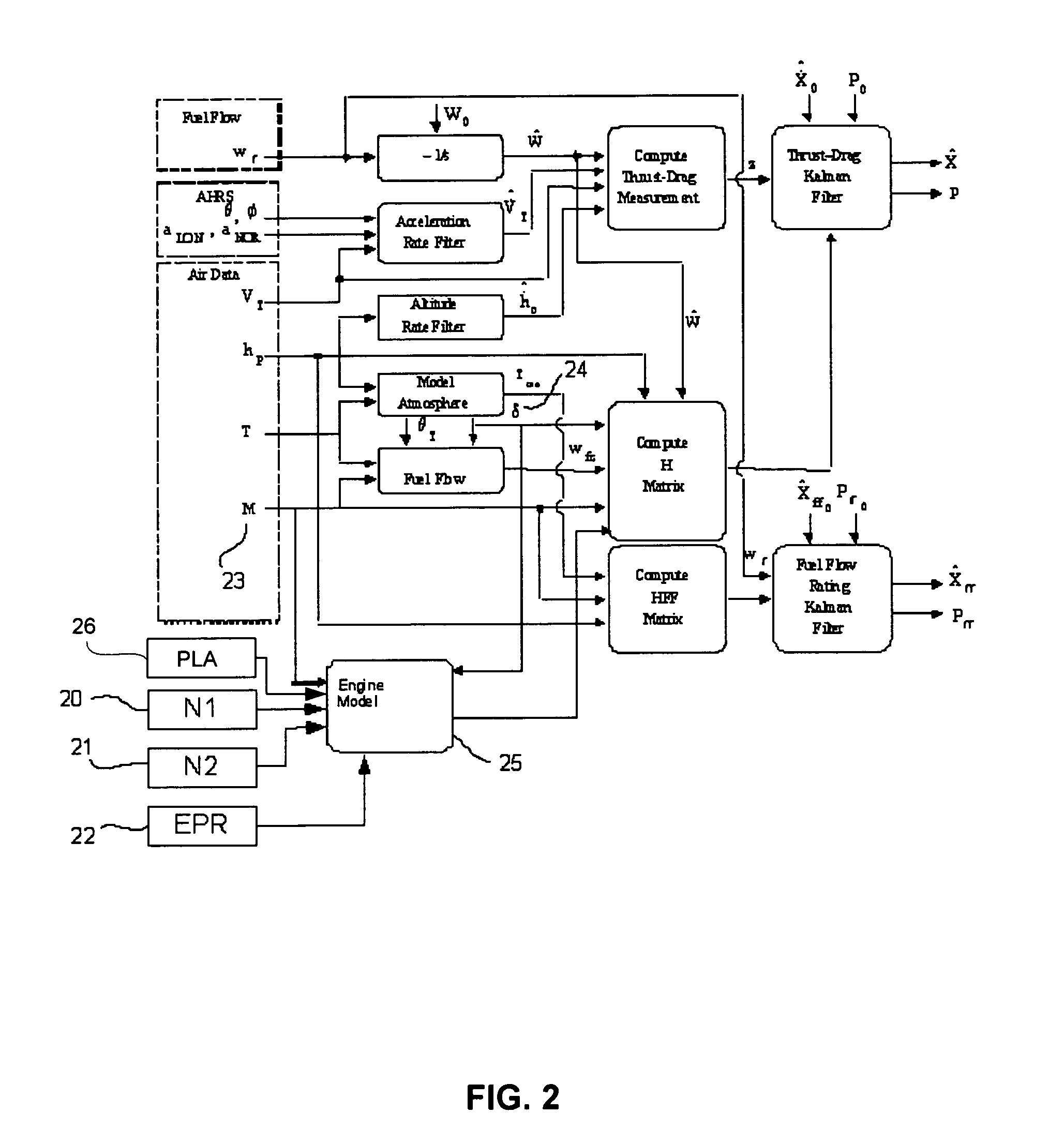Intelligent database for performance predictions
a database and aircraft performance technology, applied in the field of improving the accuracy of flight management systems based on mathematical models of aircraft performance, can solve the problems of inefficient modeling and computation of terms, add to pilot workload, and inaccurate “rules of thumb” methods, so as to improve parameter estimation accuracy, improve accuracy of predicting aircraft performance characteristics, and accurately identify
- Summary
- Abstract
- Description
- Claims
- Application Information
AI Technical Summary
Benefits of technology
Problems solved by technology
Method used
Image
Examples
Embodiment Construction
[0021] In one embodiment of the present invention, a thrust-minus-drag mathematical model of an aircraft is enhanced in two steps. In the first step, a thrust estimate is computed from data measured from at least one engine sensor. In the second step the thrust estimate is added to the thrust-minus-drag mathematical model. FIG. 1 is a schematic diagram of the parameter identification system of a mathematical model of an aircraft used in the prior art.
[0022] In this and other figures the following notation is used: [0023] wf=Fuel Flow [0024] wfc=Corrected Fuel Flow [0025]θ, φ=Pitch and Roll Attitude of Aircraft [0026] aLON, aNOR=Longitudinal and Lateral Acceleration of Aircraft [0027] VT=Velocity (true air speed) [0028] hp=Pressure Altitude [0029] T=Temperature [0030] M=Mach Number [0031] W0=Initial Aircraft Weight [0032]Ŵ=Estimated Aircraft Weight [0033] {circumflex over (V)}T=Estimated Aircraft Velocity [0034] {dot over (ĥ)}p=Estimated Altitude Rate [0035]δ=Atmospheric Pressure Ra...
PUM
 Login to View More
Login to View More Abstract
Description
Claims
Application Information
 Login to View More
Login to View More - R&D
- Intellectual Property
- Life Sciences
- Materials
- Tech Scout
- Unparalleled Data Quality
- Higher Quality Content
- 60% Fewer Hallucinations
Browse by: Latest US Patents, China's latest patents, Technical Efficacy Thesaurus, Application Domain, Technology Topic, Popular Technical Reports.
© 2025 PatSnap. All rights reserved.Legal|Privacy policy|Modern Slavery Act Transparency Statement|Sitemap|About US| Contact US: help@patsnap.com



